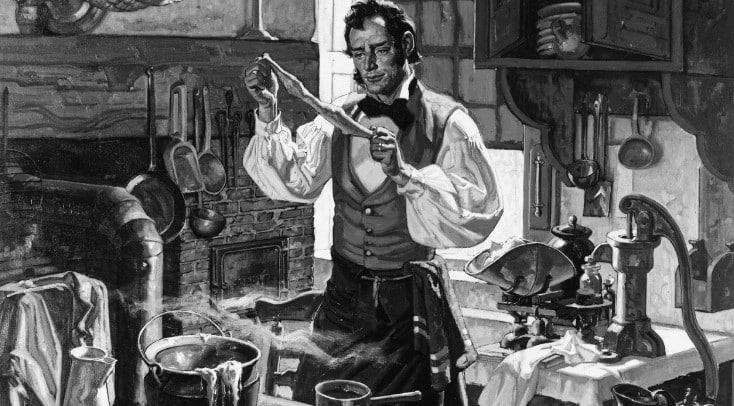History’s Bizarre Weight Loss Techniques You Can’t Believe They Exist
From ancient times to the not-so-distant past, many people went to great lengths to gain dream pounds regardless of bizarre weight loss methods. Some of these approaches were downright dangerous, while others were simply strange.
Whether it involved swallowing questionable substances or organisms, following odd diets, or enduring peculiar treatments, these unusual practices reveal much about our ever-changing attitudes towards health and beauty.
In the article, we’ll explore some of history’s weirdest weight loss methods – the strange and sometimes dangerous ways people have tried to slim down over the years.
1. Ancient Greek Techniques

The ancient Greeks were ahead of their time in promoting fitness and health. They emphasized staying active and maintaining a healthy body.
One common weight loss method they used was a drink made of vinegar, honey, and water. This blend was thought to cleanse the body and assist in losing weight.
Some studies suggest that vinegar can improve insulin sensitivity and glucose metabolism, which may help the body burn fat more efficiently.
Appetite control: Vinegar helps manage appetite by slowing the digestion of carbohydrates. This process helps keep blood sugar levels stable, reducing the urge to snack on sweet or salty foods.
Caloric intake: Adding vinegar to your meals might help you consume fewer calories overall. The strong flavor of vinegar can make you feel satisfied quicker, leading to reduced food intake, especially when consumed before a meal.
While vinegar can help with weight loss, it’s not a magic solution. Real weight loss needs a balanced diet and regular exercise. Also, drinking too much vinegar can be harmful, so it should be used in moderation as part of a healthy lifestyle.
2. Using rubber

In the mid 1800s Charles Goodyear figured out how to improve rubber beyond its natural state with a process called vulcanization. This breakthrough coincided with the Industrial Revolution, leading to a surge in the use of rubber across various products.
Among these were rubber knickers and corsets, designed with the belief that they could compress fat and induce weight loss through sweating. Both men and women wore them, despite the discomfort caused by prolonged exposure to moisture, which could soften the skin and increase the risk of infections.
“At the time all sorts of gadgets and treatments were being advertised as the way to lose weight,” says Gray. The trend eventually declined during World War I when rubber became scarce due to its necessity for the war effort.
3. ‘The Great Masticator’

In 1898, American businessman Horace Fletcher shed nearly 40 pounds by chewing each bite of food up to 100 times. This method, later called Fletcherism, required chewing until the food turned to liquid.
Fletcher, an energetic man by all accounts, wrote a best-selling book on the technique and traveled globally to promote it.
He advised people to eat only when truly hungry and to avoid eating when angry or stressed. Interestingly, followers of his diet supposedly only had to poop once every two weeks, and it was almost odorless.
According to historian and author Louise Foxcroft, “Fletcher carried a sample of his own feces around with him to illustrate this wonder.”
4. Tapeworm diet

During the Victorian era (the 1830s to 1900), known for its peculiar beauty ideals like pale skin and delicate figures, one particularly gruesome weight loss method stood out: the tapeworm diet.
This involved swallowing tapeworm cysts, usually in pill form, with the belief that these parasites would grow inside the intestines and absorb food, leading to weight loss.
However, along with shedding pounds, people often experienced severe side effects such as diarrhea and vomiting
To remove the tapeworm once the desired weight was reached, dieters took a pill meant to kill the parasite, which could result in abdominal and rectal complications.
Despite claims by sellers that there were no downsides, the reality was quite risky and potentially harmful in many ways.
Tapeworms can grow up to 30 feet long and cause various health problems including headaches, eye issues, meningitis, epilepsy, and even dementia.
The authors of a review explain: “This was a tremendous error, since the presence of this parasite […] can cause abdominal pain and discomfort, cramps, colic, diarrhea, nausea, dizziness, vomiting, vertigo, headache, tiredness, malabsorption, anorexia, muscle pain, constipation, vitamin deficiency, anemia, intestinal obstruction, [jejunal perforation], appendicitis, and pancreatitis.”
“During the 19th Century dieting became big business,” says food historian Annie Gray. “Advertising was becoming more and more sophisticated, with more and more diet products being peddled.”
5. The Lucky Strike diet

Back in the 1920s, the Lucky Strike cigarette company promoted smoking as a way to curb cravings with their slogan, “Reach for a Lucky instead of a sweet.” There was some truth to their claim; nicotine in cigarettes can suppress appetite.
However, we now understand the serious health risks associated with smoking, such as lung cancer and heart disease. It’s clear that this method is best left in the past, given what we know today about its harmful effects on health.
6. The Grapefruit diet

In the 1930s, the Grapefruit Diet, also known as the Hollywood Diet, gained fame by claiming that grapefruit’s enzymes could burn fat rapidly. Followers were required to eat a grapefruit with every small, low-calorie meal.
However, this extremely low-calorie regimen was unsustainable and potentially harmful. While grapefruit is nutritious, extreme diets like this aren’t the solution for healthy weight loss.

